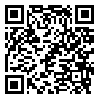BibTeX | RIS | EndNote | Medlars | ProCite | Reference Manager | RefWorks
Send citation to:
URL: http://hnmj.gums.ac.ir/article-1-577-en.html
Benson Muscle Relaxation effect on Patients Anxiety Undertake Diagnostic and Treatment within Electrophysiological Interventions
BY: Jafari H1, Baghaei Lake M2*, Sedghisabet M2, Kazemnegadleili E3
1) Nursing Education (Medical-Surgical), Instructor, Kermanshah School of nursing and midwifery, Kermanshah university of Medical Sciences, Kermanshah, Iran
2) Nursing Education(Medical-Surgical), Instructor, Social determinants of health research center(SDHRC), School of nursing and midwifery, Guilan university of Medical Sciences, Rasht, Iran
3) Bio statistics, Associate professor, Social determinants of health research center(SDHRC), School of nursing and midwifery, Guilan university of Medical Sciences, Rasht, Iran
Received: 2013/11/27
Accepted:2014/03/15
Abstract
Introduction: Anxiety is a common psychological reaction in invasive diagnostic and therapeutic such as interventions electrophysiological, that requires nursing care management for assessment and application of effectiveness to reduce it.
Objective: The present study have been conducted to determine the effect of Benson relaxation on anxiety in patients waiting for electrophysiological diagnostic and therapeutic interventions.
Methods: This is a clinical trial study on 72 patients waiting for electrophysiological interventions, admitted in Heshmat Hospital - Rasht. Samples selected through convenience sampling method, and were allocated to intervention (usual care and relaxation) and control (usual care only) groups through Random Block method. Data were collected using the 2- part questionnaire include personal - clinical data and hospital anxiety and depression scale (only anxiety part) through interview and document records information. Data were gathered in 2 stages, first before 60-15 minutes and second 5-3 hours before electrophysiology intervention (personal-clinical characteristics and level of anxiety). Intervention group encouraged to listen to audio instructions Benson relaxation for 10 minutes using headphones, and then exercise for at least 3 times between two steps of study. Data were analyzed by X2, paired t- test and independent t-test
rResults: The results showed that the mean and standard deviation of anxiety score in the intervention group after the intervention has been much lower than before (3/11 ± 3/43) compared to (7/91 ± 6/70). Paired t-test between the mean scores before and after relaxation in the intervention (P <0. 0001) and control group (P <0. 0001) was significant. Finally, independent t-test showed a significant difference (p<0. 0001) between the mean and standard deviation of anxiety score in the second step in two groups, which indicate the effect of relaxation on anxiety patients.
Conclusion: According to the results of this study, Benson relaxation significantly reduced the anxiety level in these groups of study. Therefore nurses could use this method to reduce the level of anxiety in these patients.
Keywords: Anxiety, Muscle Relaxation, Electro physiologic Techniques, Cardiac
*Corresponding Author: Mojgan Baghaei Lake, Rasht, School of Nursing and Midwifery
Email: baghaie@gums.ac.ir
Received: 2015/12/1 | Accepted: 2015/12/1 | Published: 2015/12/1
| Rights and permissions | |
 | This work is licensed under a Creative Commons Attribution-NonCommercial 4.0 International License. |



